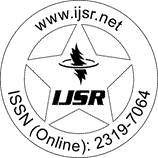Downloads: 127 | Views: 316 | Weekly Hits: ⮙1 | Monthly Hits: ⮙1
Research Paper | Mechanical Engineering | India | Volume 8 Issue 8, August 2019 | Popularity: 6.4 / 10
Design of Data Acquisition System (DAS) for Electro-Mechanical Tension Creep Testing Machine
Arvind Totey, Dr. Hardik Ramani, Shubham Rimod Padhal
Abstract: This research paper is based on the design and working of data acquisition system of electro-mechanical tensile creep testing machine. Microcontroller Arduino Nano, ADXL-345, DS-1302, SD card module, display unit is used in DAS. To improve the accuracy and precision of machine it is important to monitor several parameters like temperature, load and strain with respect to time. For this a low energy consuming and large storage capacity DAS is designed. The system can monitor creep behavior of different polymers and soft metals like lead. This system can store all the required data, which is needed to analyze creep behavior of materials automatically in a nonvolatile memory which will subsequently transmitted to computer system. Also system can make timed samples of the process of creep deformation. This data can be compared with the simulated data which will use for further research work.
Keywords: Microcontroller, Creep, ADXL-345, DS-1302, Display unit
Edition: Volume 8 Issue 8, August 2019
Pages: 2058 - 2061
Make Sure to Disable the Pop-Up Blocker of Web Browser
